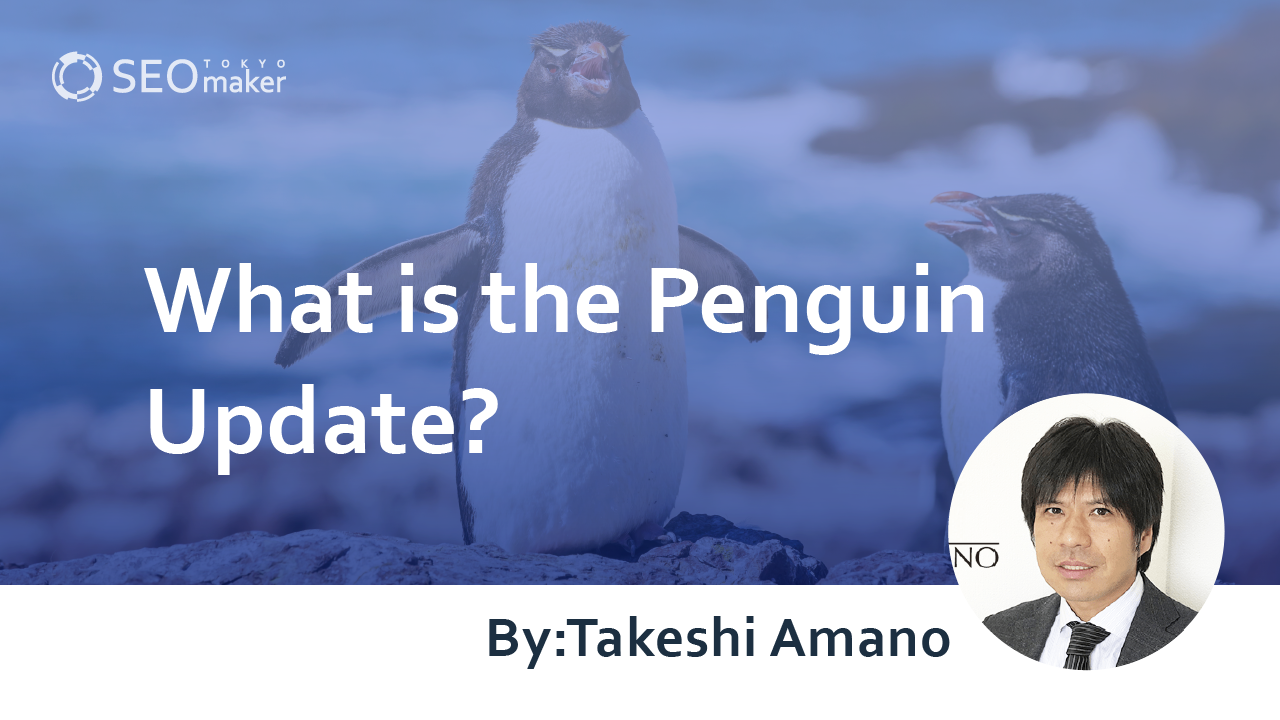What is the Penguin Update? A Complete Guide to Its Targets and Strategies
contents

The Penguin Update is a Google algorithm update that began in 2012, designed to exclude sites engaging in excessive SEO tactics or spam from search results.
Google conducts major updates three to four times a year, improving the quality of search results. The Penguin Update significantly enhanced the quality of the search engine by removing malicious sites from search results.
Google claims to ignore poor-quality links but monitors link schemes, PBNs (Private Blog Networks), reciprocal links, and unnatural external link patterns. The Penguin Update was designed to combat link spam and was integrated into Google’s core ranking system in 2016. This discussion covers the historical context of the Penguin Update.
What is the Penguin Update?
The Penguin Update is a core algorithm update that started in 2012. It targets sites violating Google’s quality guidelines by downgrading their ratings.
The update significantly revised the evaluation of backlinks, causing many sites to drop in search rankings and becoming a major topic of discussion at the time.
Before the Penguin algorithm, the volume of links played a significant role in determining the scores of web pages.
From the 2000s until around 2012, when the Penguin update began, it was the era of peak backlinking. During this time, search rankings could improve based on the sheer number of backlinks, regardless of their quality.
This practice led to widespread manipulation, which ultimately resulted in genuinely user-focused websites not appearing at the top of search results. This issue is considered a major reason behind the implementation of the update.
Background of the Penguin Update
Google has guidelines, but before the Penguin Update, simply gathering backlinks made it easy to rank high in search results.
Achieving top search rankings through SEO can generate significant traffic, prompting companies and affiliates to gather backlinks by any means, with SEO companies of that time actively selling external links. This period of SEO was characterized by a financial competition to accumulate external links.
As a result, websites genuinely serving user information were overshadowed, making it impossible to implement Google’s user-first philosophy, which is the basis of their approach.
The purpose of the Penguin Update was to more finely control numerous black-hat spam techniques, reducing their effectiveness.
The Penguin Update worked to better understand and process the types of links websites or webmasters were acquiring, reducing the evaluation of spammy links while raising the evaluation of natural and trustworthy relevant links.
The Penguin Update deals only with backlinks of a site. Google investigates only the links pointing to a problem site, not the outbound links from that site.
The Impact and Effectiveness of the Penguin Update
The impact of the Penguin Update can be transferred across domains, which means changing domains and redirecting from an old domain to a new one could potentially cause more problems in the long run.
Experiments and studies show that using 301 or 302 redirects does not eliminate the effects of the Penguin penalty. Additionally, John Mueller of the Google Webmaster Forum has mentioned that using meta refreshes to redirect from one domain to another could cause issues.
Generally, it is advised not to use meta refresh type redirects as they can create confusion among users (and potentially search engine crawlers that may mistake them for redirect attempts).
Targets of the Penguin Update
Sites that significantly dropped in search rankings due to the Penguin Update were those violating Google’s quality guidelines, particularly regarding external links, which were a common practice at the time. Essentially, the update imposed strict regulations on black-hat SEO techniques.
Typical spam activities targeted by the update include
- Link schemes
- Links from auto-generated content
- Abuse of anchor text
- Cloaking
- Malicious redirects
- Hidden texts or links
- Keyword stuffing
- Abuse of rich snippet markup
Link schemes (unnatural external links)
Registering with directory sites, links from reviews, paid links, and reciprocal links intended for ranking manipulation are all considered unnatural external links and are subject to penalties.
Links from auto-generated content
Using systems to post large amounts of articles and supply external links undercuts the premise of being useful to users, and as a principle, these actions are penalized.
Misuse of Anchor Text
Manipulating anchor text to excessively focus on specific keywords when linking is considered a spam activity.
Cloaking
Cloaking is a violation of guidelines where different content is shown to users and search engines to manipulate search rankings improperly. Naturally, it results in penalties.
Improper Redirects
Redirects themselves are not problematic, but using redirects to concentrate on specific pages with the intent to manipulate search rankings constitutes spam.
Hidden Texts and Links
Using extremely small font sizes, matching text color to the background, or using CSS to display text off-screen creates content that is invisible to users but visible to search engines, and is considered spam.
Excessive Keyword Stuffing
Using keywords in titles, headers, body text, and descriptions is recommended for SEO, but stuffing them excessively to the point where it becomes meaningless and unnatural can degrade usability and increase the risk of being flagged as spam.
Misuse of Rich Snippet Markup
Rich snippets are visual information displayed in search results. However, misusing rich snippets to display content with extremely low relevance or misleading information constitutes spam activity.
After the Penguin Update
The first Penguin update occurred in 2012 and has been implemented in stages since then. There have been seven updates specifically named after Penguin, but subsequently, it became part of the core algorithm and now updates in real-time, no longer as isolated major updates.
For reference, here are the dates Penguin updates were implemented and their impact in English-speaking regions.
Update Implementation Date | Impact Scope (English-speaking Regions)
- April 24, 2012: Affected about 3.1%–5% of search results
- May 26, 2012: Minimal impact (less than 0.1% of search results affected)
- October 5, 2012: Affected about 0.3% of search results
- May 22, 2013: Affected about 2.3% of search results
- October 4, 2013: Affected about 1% of search results
- October 17, 2014: Affected less than 1% of search results
- September 23, 2016: The last update; afterward, it became part of the core algorithm
Reference: Penguin 5, With The Penguin 2.1 Spam-Filtering Algorithm, Is Now Live (Search Engine Land)
Since September 23, 2016, Penguin updates no longer occur as standalone events but are judged on an ongoing basis. This means that the monitoring of spam activities continues, and there remains a risk of penalties for those who engage in black hat SEO tactics.
Furthermore, since it is no longer treated as a separate core algorithm update, changes to your site’s ranking from Penguin adjustments may reflect each time your site is crawled. This makes the quality of content increasingly important, as evaluations are made not just on the site level but down to individual pages.
Strategies for Dealing with Penguin Updates
Sites targeted by the Penguin update are typically those engaged in black hat SEO. Thus, the remedial strategy involves naturally adopting white hat SEO practices.
However, if black hat SEO has led to significant drops in search rankings or removal from the index, it will be necessary to identify the causes and implement corrective measures.
White Hat SEO in Accordance with Google Guidelines
Websites are created for users; therefore, it is crucial to enhance usability and user experience. Google provides quality guidelines to elevate user experience, which webmasters must thoroughly read and implement.
However, these guidelines are extensive and can be time-consuming to understand. As a fundamental approach, ensure to execute the following five practices.
-Aim for clear UI/UX.
-Increase site loading speed.
-Ensure site security.
-Deliver high-quality content that benefits users.
-Promote your site appropriately externally.
Identify and Improve Causes of Penalties
If your search ranking has significantly dropped due to the Penguin update, it’s crucial to identify the causes and make improvements. As spam practices are now entirely unacceptable, you should review your site and backlinks, identifying any areas that may be problematic.
In cases of manual penalties, Google Search Console’s “Manual Actions” section can sometimes show details of the penalties. However, notifications of penalties are not always guaranteed, necessitating meticulous compliance with Google’s guidelines, which include avoiding actions like
- Using automatically generated content for linking
- Participating in link schemes
- Creating pages that lack original content
- Cloaking
- Implementing sneaky redirects
- Using hidden text or links
- Creating doorway pages
- Publishing content without sufficient value
- Engaging in keyword stuffing
- Creating pages with malicious behaviors such as phishing or installing malware
- Abusing structured data markup
- Sending automated queries to Google
Reference: Webmaster Guidelines (Google Search Central)
It’s worth noting that resolving penalties can be challenging, often requiring knowledgeable and experienced personnel to handle the process. The time to resolve can vary significantly, from as little as two weeks for minor penalties to more than eighteen months for severe cases.
Recovery from the Penguin Update
If your site seems to be adversely affected by the Penguin update, conduct a link audit to remove or disavow low-quality or spammy links.
Google Search Console offers a disavow links tool. Google recommends using this tool only as a last resort after making a proper reconsideration request for your links. This tool instructs Google to ignore all the links listed in your file, which can help recover your rankings if low-quality links were affecting them. However, care must be taken not to disavow high-quality links inadvertently as it can also negate their benefits.
Note that Google Search Console includes a list of backlinks to your site, but be aware that some links listed may no longer be followed.
If a link is not followed, it will not affect your site.
Differences Between Penguin and Panda Updates
In 2012, a significant update known as the Panda Update was implemented. This algorithm heavily regulated low-quality content and is often discussed alongside the Penguin Update.
The main difference between the two is that while the Penguin Update targets general spam activity, the Panda Update focuses on the quality of content.
However, low-quality content is also a target of the Penguin Update, so it can be challenging to distinguish whether a drop in rankings is due to the Penguin or Panda Update if content is the cause.
Regardless of which updates are responsible, adhering to guidelines and improving the site can certainly help recover and improve search rankings.
Summary
The Penguin Update is an algorithm that improves the accuracy of search engines by regulating general spam activities. This update significantly impacted many sites’ search rankings and dramatically shifted the perception of backlinks as harmful. However, Google still recognizes the usefulness of backlinks in search rankings, and the relationship between external links and search rankings remains inseparable. The pre-2012 SEO tactics were purely about financial competition, which was challenging for small and medium-sized enterprises without significant capital. Thanks to the updates, the focus has shifted to content, allowing competition based on the ability to provide information to users rather than on financial capacity. Today, original, high-quality content is essential, and achieving high search rankings without improving content quality is challenging. Deepening user understanding is now a direct route to SEO success.










![What is a Description? Explaining the Meaning, Writing Style, and Changing Word Count – [2023 Edition]](https://www.switchitmaker2.com/en/wp-content/uploads/2024/09/what-is-description.webp)










